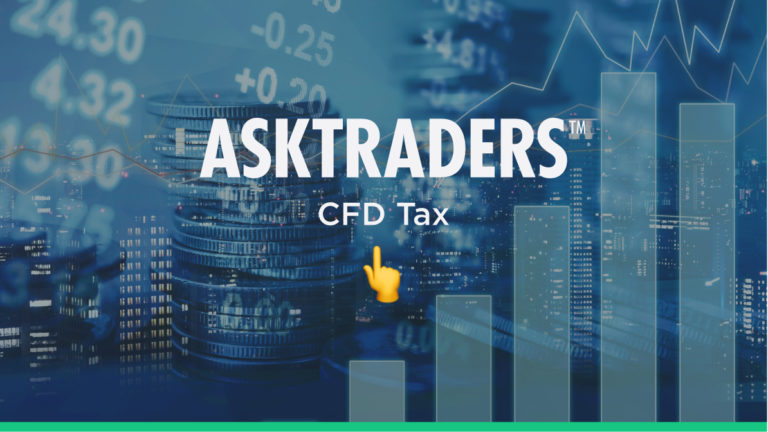
Given that CFD trading has grown to dominate large parts of the financial markets, the question is, why is something that didn’t even exist until recently so popular? To a large extent, the answer to that question comes down to how they are treated in terms of taxation. This article will cover the following topics:
- Why were CFDs invented?
- What are the tax benefits of using CFDs?
- Are there any taxation-based reasons to not use CFDs?
- What are the alternatives to CFD trading?
- Final thoughts
Why were CFDs invented?
Trading is hard enough without starting a trade in the red. Until CFDs were ‘invented’ in the 1990s, any UK citizens buying UK stocks would pay a 0.5% tax on their purchase.
Charged at the time of trade, traders were left starting their trading journey with an immediate hole in their P&L.
Two bankers, Brian Keelan and Jon Wood, were looking to drum up business for their bank, UBS Warburg. They developed a strategy that would help their clients and by connection, all UK share buyers avoid paying the Stamp Duty Reserve Tax (SDRT).
Being aware of the mechanics of trading, Keelan and Wood used UBS Warburg’s status as a ‘broker-dealer’ to get around the problem.
Broker-dealers are considered to be the lubricant that keeps the equity markets turning. They help put greater trade volumes through the exchanges, keep markets liquid and prices accurate. They also don’t pay SDRT.
The exemption for broker-dealers is because the high transaction volumes they put through are good for the market. They aren’t the ultimate owner of the stock, so will be unlikely to gain from any price move. Furthermore, if SDRT was charged, they’d probably pack up and look at moving into another line of business.
What UBS Warburg realised was that UK stocks could be bought and sold. Its clients could be offered a contract where the price move in the underlying asset was the P&L on the trade.
Originally called an equity swap, the product had other advantages. It could be traded on margin, allowed for short selling and could cover any asset group, including forex, commodities and indices.
What are the tax benefits associated with trading CFDs?
One of the most important aspects to learn about CFD trading is that you are not buying an asset but are instead entering into a contract between you and a broker. It is one where you both agree to pay or receive cash from each other, according to how the price in a market moves.
It’s hard for the UK tax authority (HMRC) to challenge that relationship. It can, of course, be applied to various markets. Whether trading forex or UK stocks, UK citizens do not pay the 0.5% SDRT.
The other neat tricks that come as part of the CFD package are nice-to-haves. The first and fundamental catalyst for their creation, was the need to find a way around SDRT and bring more buyers into the UK stock market.
If you want to know how to make money with CFD trading, you do need to know about the potential costs.
Are there any taxation-based reasons to not use CFDs?

When working through possible tax implications, it’s always best to refer to the base source of information. In the case of UK citizens and shareholding taxes that source is HMRC.
There is a lot of freely available research online, a lot of it from reputable sources. While it is always essential you check the T&Cs, it is possible to consider vehicles other than CFDs to protect you from taxation charges.
Dividends: The general market practise is for dividends paid by UK stocks to be passed onto the holders of CFDs. This comes down to your relationship with your broker. Remember, the contract is between the client and broker so the devil will be in the detail of that agreement.
Withholding Tax (WHT): This is a charge that is (or isn’t) levied on those dividends. Whether you hold the stock in paper, electronic or CFD form can influence what percentage WHT you pay.
Income Tax: Any income from dividends is exempt from income tax charges as long as the annual revenue is £2,000 or less. If you are trading CFDs for a living, this becomes a bigger issue.
Capital Gains Tax (CGT): If you’re super-successful at trading and don’t hold your position on a tax-efficient wrapper, you can be liable for CGT.
You have to make more than £12,300 per annum to start thinking about CGT charges. If you hold your position in an ISA, PEP or SIP, or if you hold stocks in your employer, you won’t be liable for CGT. You’ll note that these more tax efficient vehicles are not CFD-friendly.
The WHT, Income Tax and CGT notes highlight how CFDs are not a silver bullet. The big gain is on SDRT and it is quite a considerable one.
In terms of taxes, CFDs incur charges that are at least equal to and possibly greater than stock and share positions held in different formats.
Those with concerns about CGT might want to consider the option of spread betting tax-free.
What are the alternatives to CFD trading?
Buying a stock in the old way still works for a lot of investors. Over a longer-term holding period, the 0.5% SDRT charge can appear much less of a drag on performance. In addition, buy-and-hold strategies can be less demanding in terms of time spent monitoring your portfolio.
If you’re considering going with this option then the below breakdown on the small print is worth noting:
- Buying physical (paper shares) = SDRT on buy trades = 0.5% of value of transaction on trades over £1,000 and rounded up to the nearest £5.
For example, a purchase of £12,600 shares of UK listed ABC plc. At 0.5%, stamp duty is £63.00, which is rounded up to £65.00. The holder must send a stock transfer form to HMRC for official stamping, and payment within 30 days.
- Electronic / online trading = SDRT on buy trades = 0.5% of the value of transaction on any trade. The charge is debited automatically at the time of trade and rounded up or down to the nearest penny.
There are other exemptions, which might catch your eye. Purchasing UK equities does not incur 0.5% SDRT in these circumstances:
- You are an employee of the firm involved (exemption applies up to £50,000)
- A new issue or IPO of shares
- Funds – such as an open-ended investment company (OEIC)
- Exchange Traded Funds (ETFs)
- Shares in foreign firms, those not listed in the UK
There are also financing charges to consider. If you’re buying a stock CFD, then, as it’s margined, you’ll be looking at paying overnight financing charges to the broker. On the other hand, a buy-and-hold of some share certificates will incur fewer charges.

Final thoughts
CFDs may not be the UK tax authorities’ favourite financial instrument. They have been responsible for a significant reduction in tax revenues. It’s hard to challenge the broker-client relationship — a two-way contract relating to the financial markets.
Also, removing the broker-dealer exemption that some firms have would make stock markets less efficient.
A lot of the complexity surrounding taxation goes on behind the scenes. Anyone who wants to learn about CFD trading can do so by working with a basic knowledge of the most important items. The rest follows as and when you move up to being an intermediate and advanced grade trader.
One interesting feature of CFDs is that they are now even being used in markets other than finance. There are test cases due to be heard on situations where CFDs have been used as part of employer-employee remuneration.
Such schemes might not directly help your trading P&L, but offer a succinct breakdown of the underlying principles of CFD trading.
